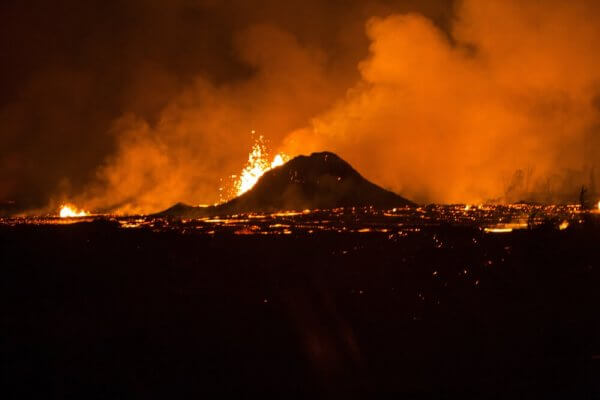The recent volcanic eruption in Hawaii continues to keep soldiers and airmen busy as lava flows at a rate of 26,000 gallons per second, according to Lt. Col. Charles Anthony of the Hawaii National Guard.
The Hawaii National Guard was first activated on May 7th to assist the local county with the Kilauea volcano eruption. Initially, the unit was the only resource capable of safely conducting certain operations—including handling the mass influx of media outlets to the big island.
Adaptable training
Anthony, who has served with the Guard for 28 years, said the unit trains annually for similar events through “one big hurricane exercise.” He adds, even though the training isn’t specific to volcanic activity, it does prepare Guardsmen with similar command-and-control and logistics skills that translate into the roles required for managing the aftermath of such an eruption.
He describes the current lava flow as “quite spectacular, almost mesmerizing in terms of the visuals.”
“I’ve been pretty close, within a few hundred yards of very active fissures and I’ve seen lava shooting 300 feet into the air and then some … It’s not just what you see with the lava, but it’s really about what you hear and feel because when lava’s just fountaining up through a fissure in the ground, sometimes the vibration of it reminds me very much of being out on the runway when F-15s are taking off with full external fuel tanks. Sometimes your rib cage just ripples from the vibration of it all,” Anthony said.
Helping families find ‘home’
Guardsmen have been tapped for multiple missions since the onset of the eruption, including providing security, air monitoring, and aiding thousands of families evacuated from their homes.
“ … civil support teams have been doing air quality monitoring of certain gases being released from volcanic activity—including sulfuric acid as well as hydrochloric acid. We had soldiers and airmen who’ve been supplementing police departments at checkpoints to keep non-residents out of evacuation zones,” Anthony explained. “They also having roving patrols, they are out there driving in Humvees in neighborhoods that are mostly evacuated and abandoned. They are there to ensure looters don’t break into people’s homes while they’re not there.”
The Hawaii National Guard has also been part of an aviation task force on standby for mass evacuations, he added.
More recently, engineers from the unit have assisted in the construction of micro-shelters. The Sacred Heart Shelter will house families impacted by evacuations.
‘A very active situation’ remains
While national attention has moved to other domestic issues, circumstances on the ground in Hawaii remain uncertain.
“It’s still a very active situation. The only thing that’s really changed or stabilized is the lava has pretty much taken all the homes and communities that were in its path. As we speak, there really aren’t any other homes or communities that are currently threatened, although fissure #8 continues to pump out lava at the rate of about 26,000 gallons per second. As long as the lava keeps moving, it keeps flowing, it’s winding its way from the fissure down to the ocean where it’s actually adding more land to the big island,” he said.
Even though Hawaii residents are no strangers to the threat of volcanoes, Lt. Col. Anthony says this event is unique because it happened in the middle of a neighborhood. He added that soldiers and airmen will remain on the ground as long as lava continues flowing.

